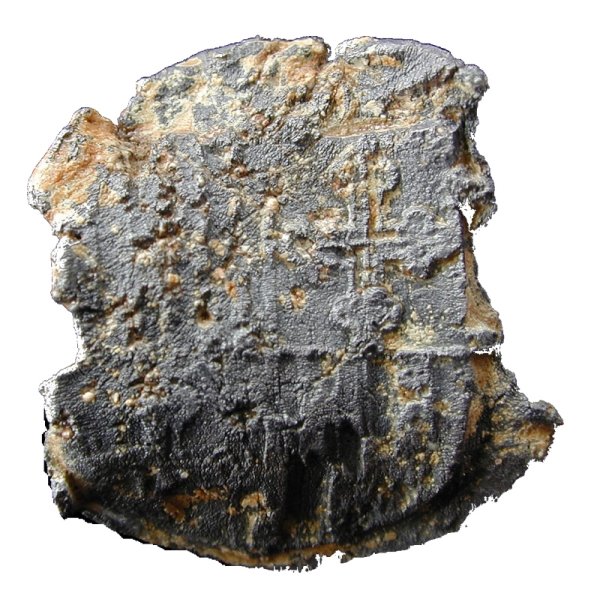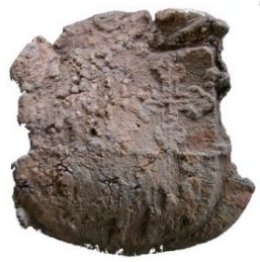Lead Seal

Conservator’s Notes
This lead seal was recovered from St. Mary’s City and is a unique artifact for several reasons. The rarity of the find was evident by the markings on the surface of the lead seal. But finding an intact lead object is also very rare. Due to the fragility of lead, markings on the surfaces of lead are usually worn away or damaged beyond recognition. When this artifact was recovered and brought to the conservation laboratory for cleaning, it was very important that the artifact’s marking not be jeopardized by the cleaning process. Leads are commonly cleaned in the conservation laboratory to remove obscuring lead-oxide and lead-carbonate corrosion products. Unlike harder metals such as iron and coppers, lead cannot be cleaned mechanically because it can easily be scratched or damaged during this process. Instead, lead is one of the only metals that is still best cleaned by immersing the artifact in a mild acid solution. This artifact would be different, however, because even immersing the lead in a solution may cause damage to the markings on the seal. Instead the artifact was cleaned using a mild acid and a poultice on the surfaces of the lead. This type of cleaning method involves mixing the dilute acid solution with an inert powder, such as fumed silica, which is then mixed to a paste consistency.
The paste is applied to the surface of the object, but only in the areas where cleaning is warranted. The poultice paste is allowed to dry on the surface, and then carefully brushed away. This method can be applied all over or in spots where the object may be more corroded, or where you may need to better reveal the markings. Afterwards, the surfaces of the lead are rinsed, dried and coated for future handling. The edges of the seal were also exhibiting problems, because they were deteriorated and very brittle. Some flaking of the lead along the edges was apparent and loss was imminent. These areas were strengthened using an acrylic consolidant, applied to specific spots using a brush.
After cleaning the object, the surfaces of the seal were revealed. Damage to the lead is evident, because the mark on the seal is not completely intact and is worn in some areas. The lead surface also shows some signs of pitting from the severity of the corrosion. This important artifact was cleaned for further identification and is now on exhibit at St. Mary’s City. It remains fragile and will be monitored for future changes to ensure its long term preservation.
Curator’s Notes
This object is unique in the archaeological collections held by Historic St. Mary’s City. It bears the heraldic crest of the Lords Baltimore, the Calvert family. The crest incorporates the Cross botony of the Crossland and Mynne families, and the Calvert “pales”. These two symbols are “cross-quartered”. The same symbols occur on the Maryland flag.



